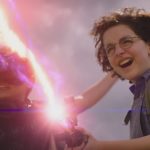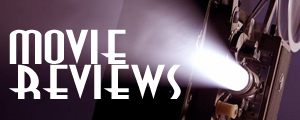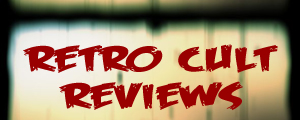

There are four corners on my bed, there are four angels overhead;
Now I lay me down to sleep, I pray the Lord my soul to keep;
If I should die before I wake, I pray the Lord my soul to take.
The above is prayed by the children often in The Woman in Black 2: Angel of Death before they go down for the night, each asking for God to take care of them as they enter the darkness of both the night and the mind at the close of each day. Our main child, the recently orphaned and now silent Edward (Oaklee Pendergast), is also specifically told on more than one occasion by our protagonist, Miss Eve Parkins (Phoebe Fox), that good thoughts wash away nightmares. She's says it each time with a warm but hollow smile. Hollow because deep down she knows it isn't true. Nightmares or, more specifically, bad memories and thoughts can haunt you forever. In the case of Eve, her past trauma revolves around birthing a child at a very young age and having it placed into adoption against her will. We also have her potential love interest, pilot Harry Burnstow (Jeremy Irvine), who is now terrified of water after a war-time trauma.
Mostly alone in the countryside at the infamous Eel Marsh House, our cast of characters — Eve, Harry, Miss Jean Hogg (Helen McCrory), Edward and seven other children — are holed up away from civilization to hide away from the terror of German bombers in World War II-era England. As if traumatic pasts, a chaotic present and endangered futures weren't enough to contend with, there is also the matter of the house being a living bad memory itself, personified by the titular murderous wraith. Judging from the events of the last film, things aren't going to turn out too well for our small cast.
Before you ask, no, you needn't have seen 2012's The Woman in Black to sit down with this new spooker. While there are visual callbacks to James Watkin's underrated film, nothing in the plot requires prior knowledge to those events, and there are no direct connections beyond the house and the Woman herself. This is both helpful and a hindrance to this sequel, though more the former than the latter. As with any sequel that isn't a direct continuation, some backstory overlap is to be expected. After all, we might know what is needed to understand the ghostly adversary's motivations, but our new characters do not.
Speaking of our characters, all are well-written, and the cast is more than up to the challenge of bringing them to life. All too often in this genre one comes across walking archetypes and talking cardboard cutouts. That goes double for sequels, so to have one hit theaters with a well-rounded bunch of protagonists is refreshing. If that sounds like a low bar to clear, well, I'm just glad this one hopped over it. The downside to having around a dozen characters to contend with is that it complicates things a bit more this time around, robbing the film of the stark simplicity of its predecessor. As a result, I didn't connect with this second Eel Marsh frightfest as much as last time. Perhaps that's just my own personal hang-up, however. My own baggage that I'm bringing into Eel Marsh House, if you will.
The real star here is director Tom Harper, whose keen eye and deft execution of this tale helps elevate the already palpable sense of dread permeating the film. Without Harper, I suspect this might have ultimately turned out to be a forgettable follow-up. That might sound a little harsh, but there's a certain something that I feel is still missing this time.
I'm not sure if it is the aforementioned larger amount of characters or the fact that we are stuck within the same setting again (even if it is decades later), but a sense of sameness fills the film for the majority of its running time. There's naturally a tease at the end for a possible third film that involves a change of setting. Perhaps that is what this film needed from the get-go, especially since the Woman herself isn't exactly tied to her familiar haunt. It might have lacked that wonderful house and location, but a change of scenery would have at least added a different element to the proceedings. If a third is made, I hope they stick with the loose tease, even if there are still no returning characters.
In the end, this sequel is entertaining, but neither the efforts of the cast nor the director are enough to push it into the same must-see territory as its predecessor. It's pretty good, but it's not great. If you enjoyed the first, you will likely enjoy this one, possibly even more than I did. If you didn't like the last one? Well, Angel of Death certainly isn't going to change your mind.











